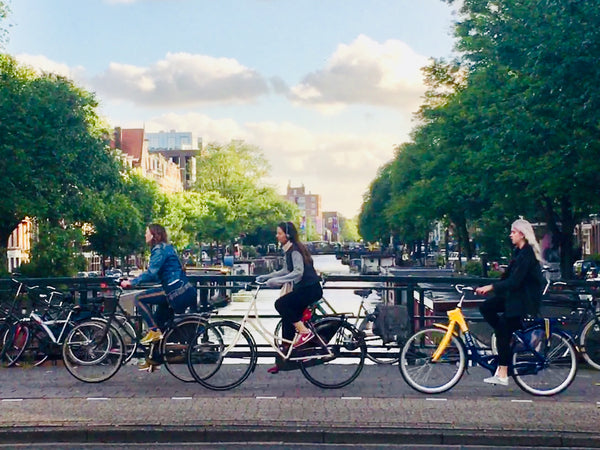
What happens to a society when they interact with one another everyday on their commute? What does pulling people out of the car bubble and into the street as cyclists & pedestrians do to a sense of community? The social consequences of a normalized cycling culture are far reaching. We think it builds trust and confidence and permeates every aspect of social life.
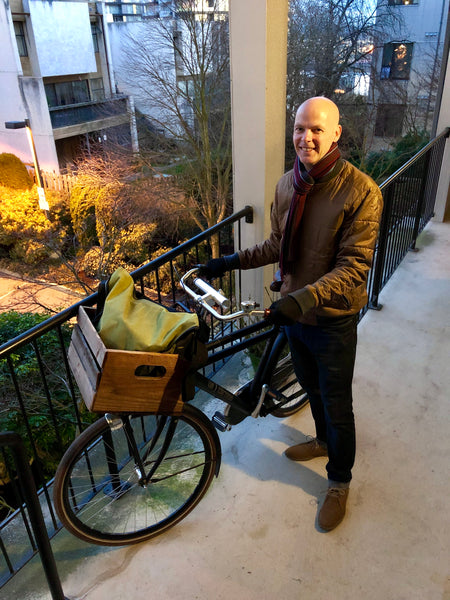
He understands the importance of a normalized cycling culture; not only is it a comfortable way to ride a bicycle but it helps to create safety in the streets by encouraging others to hop on their bikes, dress for their day, not the ride. It’s the urban aspect of cycling that matters over sport when seeking to create a normalized cycling culture.
In the Netherlands (NL) people come first in the street hierarchy and the car is the guest. People are not forced into wearing safety gear and helmets to keep themselves ‘safe’ from people driving cars. The streets are designed for the safety and convenience of people, not car traffic. Therefore, the application of ‘safety gear’ becomes non-existent.
Forced application of helmet use & safety gear while cycling is a sign of a government who failed to provide proper separated infrastructure and is typical of a nation that worships car ownership and use, over the safety of people. Harsh words of reality, I know.
Signs of a mature cycling city offer all different kinds of mobility choices for moving about your day. In The Netherlands, the secret to Dutch cycling is the first km (after you leave your home) bike ride or walk to the train. It’s the secret sauce that binds the mobility chain together and makes different modes of transport and longer distances possible. This allows for increased interdependence across larger distances and the ability to leave the car at home.
Cycling in The Netherlands is an egalitarian act, everyone does it from the King, Prime minister, children, office workers, priests, university students, lawyers, moms and their babies; they all ride a bicycle to the places they need to go. Using the bicycle to go to the train station, a bus stop, or a tram to go farther happens at all levels; there is no class distinction in their transportation choices.
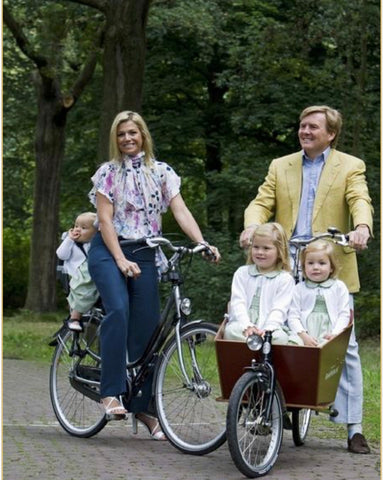
'The Dutch don't show off their wealth and social ostentation has been ostracized and being normal is rewarded. Cycling in The Netherlands is a way of showing off by not showing off; despite all your wealth we are all still 'gewoon' (normal)'.~ Giselende Kuipers
Of course, it goes without saying, that many Dutch citizens' own vehicles but, the difference between this Dutch cycling nation and the North American car culture is that the Dutch don't define themselves by the car they drive. They also don’t just hop in it to be seen because driving isn’t always the best way to get around. They don't drive their car 2 blocks to the grocery store they just hop on a bike – even in the rain and they most certainly do not drive their car 5km to get to work.
Walking out their door they have public transportation choices and consider where they need to go and the best way to get there. It’s these choices that make a city flow and keep its citizens healthy.
Super urbanization is unfriendly to cyclists and pedestrians and determines what transportation is focused on in cities. The normalization of car culture has resulted in constant care and feeding, in terms of continued investment in street maintenance. In a car-orientated infrastructure, whether planners know it or not, discourages other forms of transportation. This car dominance has enormous implications for how cities are planned, built, and experienced through the eyes of its citizens. Cities should be built for people, our most vulnerable who walk, cycle, and roll around on our city streets and sidewalks.
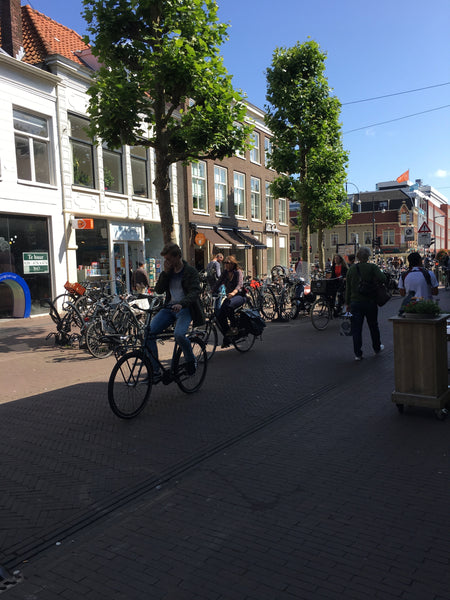
City life doesn't get much better than this totally relaxed, people-friendly design. Can you imagine Government St. in Victoria looking like this.
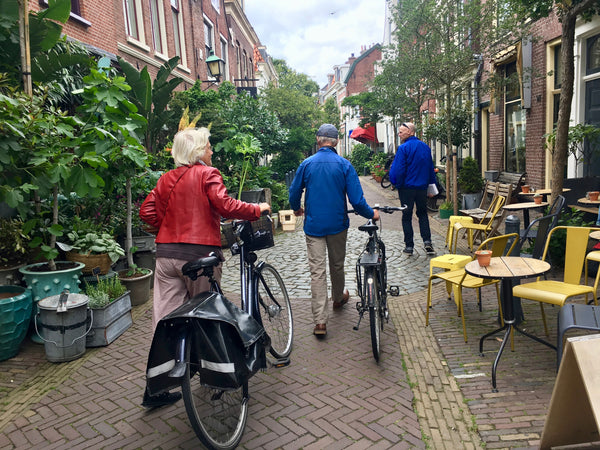
I recently discovered that in Victoria, one person every week is hit by someone driving a car. Every week! This fact is so unbelievably shocking to me I don't even know where to begin. What we need to do is so very clear. Speed is the enemy of safety. There must be equity in moving people and traffic through and around city streets that provides our most vulnerable safe passage, always and never at the expense of a human life.
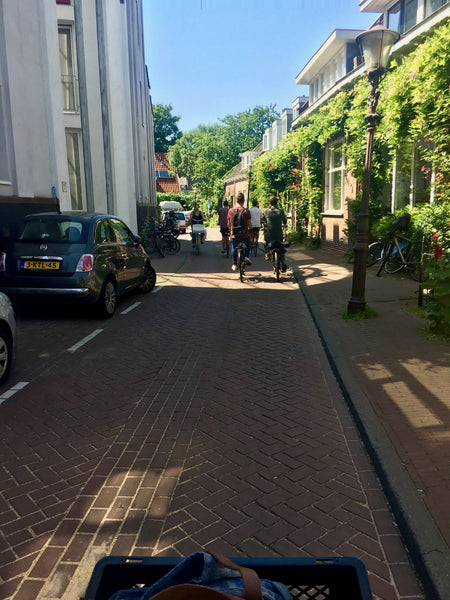
Woonerf - Car as the guest in residential zone
One of the most important lessons I brought home with me from my studies abroad at the University of Amsterdam is that it’s the people moving through the streets that matter most, not moving automobiles. The safety of the streets in The Netherlands is set up for people. The social consequences of a normalized cycling culture are far reaching and we think it builds trust and confidence and permeates every aspect of social life. So why is this such a difficult concept to grasp? Shouldn’t life itself be a social value we all care most about?

A pedestrian-priority zone
If we use Amsterdam as the role model for this approach, it took a number of decisive events for Amsterdam to succeed in becoming the bicycle capital of the world. It was fierce activism (public outcry), social change (1970’s oil crisis), and strong political will to take the first steps in becoming a true cycling city. It didn't happen overnight in Amsterdam and it won’t in our cities either. We all have to be committed and in it for the long haul.
We need to be open to elegant solutions that focus on people, urban vitality, and on livability in order to navigate through and accommodate the mobility needs of the 10,000 people expected to move into our city in the next decade.
How are we designing Victoria to optimize a mobility network that cares for our safety in the streets and our future health? This is the urgency we are facing.

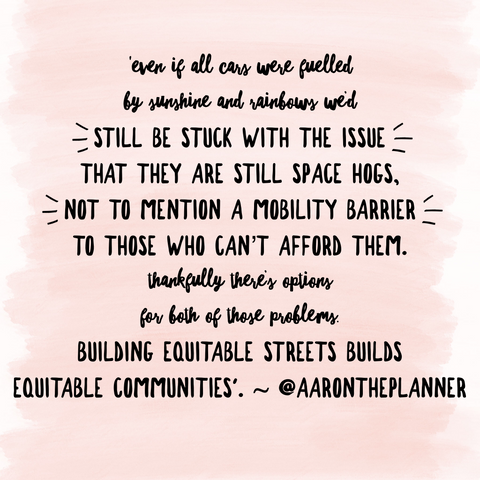
 Nothing will be posted on your behalf.
Nothing will be posted on your behalf.


Leave a comment